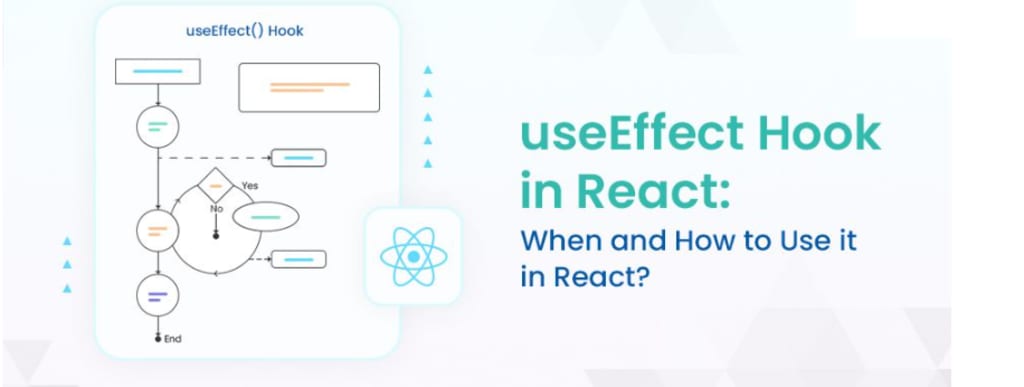The Future of React Is With Hooks
React hooks

In the world of React programming, useEffect is a powerful tool that helps developers to create responsive and dynamic user interfaces. But what exactly is useEffect, and how does it work? In this blog post, I will tell you about the ins and outs of useEffect, demystifying this essential tool for developers. Are you ready?
Let's break down how does useeffect work.
What is useEffect?
Essentially, useEffect is a React Hook that allows developers to add side effects to their functional components. But what exactly does that mean? Let me make that simple for you. In the context of programming, a side effect is any change that a function makes to the state of the system it's running in. For example, if a function changes a variable or makes an API call, that's a side effect.
So, why is it useful to be able to add side effects to functional components? Any idea?
Let’s understand.
The Advantage
Well, it allows developers to create dynamic and interactive user interfaces. For example, if you want to update a component's state based on a user's input, you can use useEffect to listen for changes in that input and update the state accordingly. Or, if you want to fetch data from an API when a component mounts, you can use useEffect to make that API call and update the component's state with the fetched data. Could I make it clearer?
But how does useEffect actually work?
The Process
At its core, useEffect is a way to perform side effects in a functional component without breaking the rules of React. In other words, it allows developers to create stateful logic in a stateless component. This is important because stateless components are easier to reason about and test than stateful components.
So, let's dive into the details of how useEffect works.
How useEffect Works?
When a functional component renders, React first runs all of the component's code to determine what it needs to display. This includes any JSX code, as well as any JavaScript code that's used to calculate the component's props or state. Once React has determined what the component needs to display, it renders the component to the screen.
After the component has been rendered, React runs any useEffect hooks that are included in the component. These hooks allow developers to add side effects to the component that will be run every time the component renders. This includes the first time the component is rendered, as well as any subsequent times the component is re-rendered due to changes in state or props.
There are three main parts to a useEffect hook:
- The callback function,
- The dependencies array, and
- The cleanup function.
I will explain them in detail. The callback function is the code that runs every time the component renders. It can include any JavaScript code, such as making an API call or updating the component's state.
Let’s come to the second one. The dependencies array is an optional parameter that allows developers to specify which variables or state values the callback function depends on. If any of the values in the dependencies array change, the callback function will be run again. This is useful for optimizing performance, as it prevents unnecessary re-renders of the component.
Last but not the lease, the cleanup function is another optional parameter that allows developers to clean up any side effects that the component has created. For example, if the component has created an event listener, the cleanup function can remove that event listener when the component is unmounted from the screen.
So, that's the basics of how useEffect works. I hope my attempt to explain everything I know about useEffect helped you.
About the Creator
Vinit Kariatukaran
I am Vinit Kariatukaran, a mobile developer at Radixweb, a leading mobile app development company, passionate about developing and designing innovative high-reach mobile applications that work well.






Comments
There are no comments for this story
Be the first to respond and start the conversation.